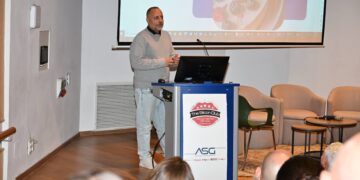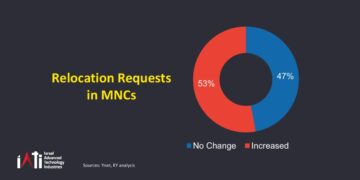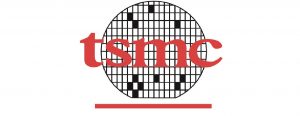EDA in the cloud still looking for takeoff
Dr. Olivier Coudert
I
I started 2013 very upbeat about EDA in the cloud. I pictured EDA very slowly moving to a SaaS business, using public clouds as a scalable infrastructure to adjust to the irregular computing resource requirements throughout the lifetime of a complex system design. I knew it would take years, but I felt that the moment was right.
EDA in the cloud still looking for takeoff
Dr. Olivier Coudert

I started 2013 very upbeat about EDA in the cloud. I pictured EDA very slowly moving to a SaaS business, using public clouds as a scalable infrastructure to adjust to the irregular computing resource requirements throughout the lifetime of a complex system design. I knew it would take years, but I felt that the moment was right.
I bet a year ago that a major semiconductor company would use public cloud to peak their compute power (e.g., for logic simulation, extraction, physical verification) and meet their schedule.
Well, so far I only saw a few attempts, and a lot of aborted discussions.
We first saw Cadence making some of its design solutions available in its private cloud, with only a handful of customers to date.
We all saw Synopsys putting its VCS solution available in AWS back in 2011. With exactly zero customer to show.
We saw Nimbic putting its SW in the cloud. With unclear outcomes.
What else did I see over the past 2 years (names purposely omitted)?
I saw a top-3 EDA vendor successfully conducting a real-scale experiment to reduce design validation from days to less than one hour, using 1000’s of cores dynamically allocated in a public cloud. But at the end, the viability of the solution depended on all the partners temporarily putting their IP in the cloud, and an agreement was never reached.
I saw a top-15 semiconductor company test-driving a cloud-based solution to transparently augment their compute power. This on-demand service allowed them to bring 1000’s of core fully operational in less then 15mn, ready for simulation and verification. But at the end, the old-fashioned way prevailed: buy more machines, even if that means that lots will stay idle; or simply miss the deadline.
I saw another semiconductor company opened to using cloud for the same purpose (peak compute power). But they eventually gave up, although that time for a good reason: economics. They are better off with their own high-performance data center where they can squeeze out every bit of performance of their very pricey EDA licenses. And we are talking serious high-performance computing: 2000 cores overclocked to 4GHz with liquid cooling, and a GPFS at 5GB/s for the file system. Pretty good setup, which even Amazon’s HPC cannot match.
I saw several EDA startups embracing the concept, but unable to drive more sales with it.
And I saw many potential customers turning down the prospect of EDA in the cloud, essentially for one and one reason only: security.
Of course, this is not always the real reason. Quite often the company’s IT department will work hard to obliterate the possibility of using a public cloud –because that would mean less power for them. But security is the sure topic to scare away the executives.
It does no matter if you demonstrate VPN, encrypted communications, with dynamically changing keys. It does not matter if you show that data-at-rest is always encrypted and is never in clear but in RAM. It doesn’t matter if you have a monitoring system that reports any activity that does not fall within some acceptable scenario. It doesn’t matter if the person arguing against cloud-based solutions because of security has no second thought sharing her credit card information for her on-line shopping. It doesn’t matter if every study shows that the most likely source of a security breach in a company does not come from some outside hackers, but from within: its own employees. Security is the bogyman in the world of semiconductor.
It is striking to see so many industries moving to SaaS and public cloud. One simple example: Big Data. Yes, it is a buzzword, but for many it is very real, and could not be achieved without software operating in public or hybrid clouds (don’t take my word for it, look it up). Seeing the complexity of HW/SW only increasing, I am a bit at a loss to justify the reluctance of the electronic design industry to embrace cost-efficient, flexible solutions.
So unless there is a pressing reason (read: the economics trumping the politics), it is unlikely that EDA evolves to SaaS in the cloud as quickly as I hoped. Looks like the whole industry needs some serious rejuvenation at the top.
{loadposition content-related}
I started 2013 very upbeat about EDA in the cloud. I pictured EDA very slowly moving to a SaaS business, using public clouds as a scalable infrastructure to adjust to the irregular computing resource requirements throughout the lifetime of a complex system design. I knew it would take years, but I felt that the moment was right.
I bet a year ago that a major semiconductor company would use public cloud to peak their compute power (e.g., for logic simulation, extraction, physical verification) and meet their schedule.
Well, so far I only saw a few attempts, and a lot of aborted discussions.
We first saw Cadence making some of its design solutions available in its private cloud, with only a handful of customers to date.
We all saw Synopsys putting its VCS solution available in AWS back in 2011. With exactly zero customer to show.
We saw Nimbic putting its SW in the cloud. With unclear outcomes.
What else did I see over the past 2 years (names purposely omitted)?
I saw a top-3 EDA vendor successfully conducting a real-scale experiment to reduce design validation from days to less than one hour, using 1000’s of cores dynamically allocated in a public cloud. But at the end, the viability of the solution depended on all the partners temporarily putting their IP in the cloud, and an agreement was never reached.
I saw a top-15 semiconductor company test-driving a cloud-based solution to transparently augment their compute power. This on-demand service allowed them to bring 1000’s of core fully operational in less then 15mn, ready for simulation and verification. But at the end, the old-fashioned way prevailed: buy more machines, even if that means that lots will stay idle; or simply miss the deadline.
I saw another semiconductor company opened to using cloud for the same purpose (peak compute power). But they eventually gave up, although that time for a good reason: economics. They are better off with their own high-performance data center where they can squeeze out every bit of performance of their very pricey EDA licenses. And we are talking serious high-performance computing: 2000 cores overclocked to 4GHz with liquid cooling, and a GPFS at 5GB/s for the file system. Pretty good setup, which even Amazon’s HPC cannot match.
I saw several EDA startups embracing the concept, but unable to drive more sales with it.
And I saw many potential customers turning down the prospect of EDA in the cloud, essentially for one and one reason only: security.
Of course, this is not always the real reason. Quite often the company’s IT department will work hard to obliterate the possibility of using a public cloud –because that would mean less power for them. But security is the sure topic to scare away the executives.
It does no matter if you demonstrate VPN, encrypted communications, with dynamically changing keys. It does not matter if you show that data-at-rest is always encrypted and is never in clear but in RAM. It doesn’t matter if you have a monitoring system that reports any activity that does not fall within some acceptable scenario. It doesn’t matter if the person arguing against cloud-based solutions because of security has no second thought sharing her credit card information for her on-line shopping. It doesn’t matter if every study shows that the most likely source of a security breach in a company does not come from some outside hackers, but from within: its own employees. Security is the bogyman in the world of semiconductor.
It is striking to see so many industries moving to SaaS and public cloud. One simple example: Big Data. Yes, it is a buzzword, but for many it is very real, and could not be achieved without software operating in public or hybrid clouds (don’t take my word for it, look it up). Seeing the complexity of HW/SW only increasing, I am a bit at a loss to justify the reluctance of the electronic design industry to embrace cost-efficient, flexible solutions.
So unless there is a pressing reason (read: the economics trumping the politics), it is unlikely that EDA evolves to SaaS in the cloud as quickly as I hoped. Looks like the whole industry needs some serious rejuvenation at the top.
| {loadposition content-related} |






























